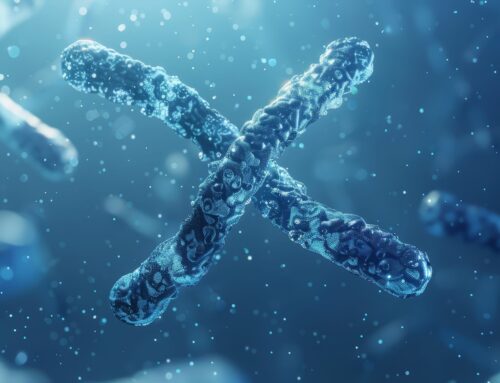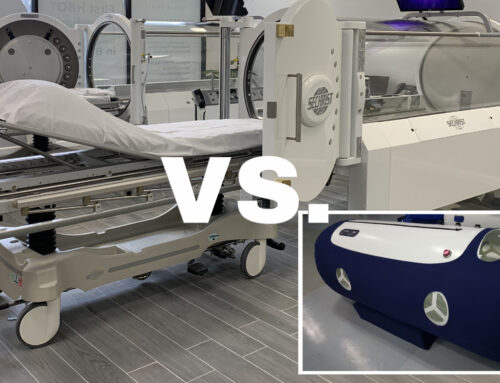Higher oxygen levels may boost mitochondrial function and cellular repair mechanisms.
The human body’s capacity for healing and cellular regeneration depends on oxygen availability. Recent advances in therapeutic oxygen delivery have revealed remarkable insights. These insights reveal how elevated oxygen levels can enhance mitochondrial function and accelerate cellular repair processes.
This emerging understanding has significant implications for treating various conditions, from traumatic injuries to chronic wounds, while offering potential benefits for enhancing overall cellular health and longevity.
Mitochondria, often called the powerhouses of cells, are the primary oxygen consumers in thin human tissue. These cellular organelles produce adenosine triphosphate (ATP), the energy currency that fuels virtually all cellular processes. Mitochondrial function can be significantly enhanced when oxygen levels increase beyond normal atmospheric levels, leading to improved cellular energy production and more efficient repair mechanisms.
The Influence of Hyperbaric Oxygen Therapy on Mitochondria
Hyperbaric oxygen therapy (HBOT), which involves breathing 100% oxygen at pressures greater than atmospheric pressure, has emerged as a powerful tool for studying and harnessing these effects. HBOT increases the proportion of dissolved oxygen in the blood five- to twenty-fold, creating an oxygen-rich environment that directly impacts mitochondrial performance. This dramatic increase in available oxygen allows mitochondria to operate optimally, overcoming oxygen limitations that might otherwise impair cellular function.
Research has demonstrated that enhanced oxygen availability triggers multiple beneficial pathways within mitochondria. HBOT affects multiple primary pathways and cellular functions, including mitochondrial biogenesis and function (increased Bcl-2, reduced Bax, and enhanced ATP production). The upregulation of Bcl-2, an anti-apoptotic protein, while simultaneously decreasing Bax, a pro-apoptotic factor, creates a cellular environment more conducive to survival and repair than programmed cell death.
Enhanced Cellular Repair Mechanisms
The relationship between oxygen levels and cellular repair extends beyond simple energy production. Oxygen is a critical substrate for numerous biochemical processes essential to tissue healing and regeneration. When cells access higher oxygen concentrations, they can accelerate protein synthesis, enhance collagen production, and support the complex cascade of molecular events required for effective tissue repair.
One of the most significant impacts of elevated oxygen levels is the cellular response to injury and stress. Oxygen is vital for healing wounds. It is intricately involved in numerous biological processes, including cell proliferation, angiogenesis, and protein synthesis, which are required to restore tissue function and integrity. These processes are fundamentally oxygen-dependent, and their efficiency is directly related to oxygen availability at the cellular level.
The mechanisms through which higher oxygen levels enhance repair are multifaceted. Enhanced oxygenation supports increased metabolic activity, allowing cells to produce the energy necessary for repair processes. Additionally, oxygen availability influences gene expression patterns, particularly those related to growth factors and repair-promoting proteins. This regulatory effect means that cells in oxygen-rich environments are more likely to express genes that promote healing and regeneration while suppressing those that might impede recovery.
Clinical Applications and Evidence
The therapeutic potential of enhanced oxygen delivery has been demonstrated across various clinical applications. In wound healing, oxygen therapy has shown remarkable effectiveness in treating chronic, non-healing wounds that have failed to respond to conventional treatments. The enhanced oxygen environment supports cellular metabolism and creates conditions hostile to certain types of bacteria, particularly anaerobic organisms that thrive in low-oxygen environments.
Recent clinical studies have provided compelling evidence for the effectiveness of oxygen enhancement therapies. Research on middle-aged athletes demonstrated that HBOT has been used to increase endurance performance but has yet to be evaluated in placebo-controlled clinical trials.
When subjected to rigorous double-masked, randomized, placebo-controlled testing, participants showed measurable improvements in mitochondrial function and physical performance. This factor suggests that the benefits of enhanced oxygen delivery extend beyond therapeutic applications to performance enhancement.
The neuroprotective effects of enhanced oxygen delivery have also garnered significant attention. Studies have shown that oxygen therapy can protect against mitochondrial dysfunction in neurological conditions. Research also indicates that proper oxygen delivery helps preserve mitochondrial membrane properties and reduces neuronal cell death. This protective effect is mediated by preserving mitochondrial integrity and maintaining cellular energy production even under stress conditions.
Molecular Mechanisms and Future Directions
At the molecular level, enhanced oxygen availability triggers a complex cellular response network beyond simple metabolic enhancement. The increased oxygen concentration affects cellular signaling pathways, particularly those involved in hypoxia-inducible factor (HIF) regulation.
Under normal conditions, HIF responds to low oxygen levels by initiating adaptive responses. However, when oxygen levels are elevated, cells can shift from survival to growth and repair mode, redirecting cellular resources toward regenerative processes.
The impact on cellular structure and function is profound. Enhanced oxygen levels support improved mitochondrial biogenesis, leading to an increased number of these critical organelles within cells. This proliferation of mitochondria provides cells with greater energy-producing capacity. This activity can be particularly beneficial during periods of high metabolic demand,such as healing and repair.
Research continues to unveil new mechanisms through which oxygen enhancement benefits cellular function. Scientists are investigating how elevated oxygen levels influence epigenetic modifications. This type of influence creates lasting changes in gene expression patterns that favor repair and regeneration.
Additionally, studies are examining the role of enhanced oxygen delivery in stem cell function and differentiation. Early results suggest that oxygen-rich environments may promote stem cell activation and improve their regenerative potential.
Cellular repair enhancement through oxygen therapy represents a rapidly evolving area of medical science. As our understanding of the molecular mechanisms continues to expand, new therapeutic applications will likely emerge.
Current research explores the optimal protocols for oxygen delivery, investigates combination therapies that enhance effectiveness, and develops new technologies for more precise and targeted oxygen delivery.
Future developments may include personalized oxygen therapy protocols based on individual cellular metabolism, advanced monitoring systems to optimize treatment parameters, and novel delivery methods targeting specific tissues or cellular populations.
As science advances, the potential for harnessing enhanced oxygen delivery to promote cellular repair and regeneration appears increasingly promising. This discovery enables doctors to treat various conditions while supporting overall cellular health and longevity.
__________________________________________________________________________
1659 Ralph Ave., Brooklyn, NY 11236
phone 718-255-9955
fax 718-228-3772
___________________________________________________________________________
References
- Liu, Y., et al. (2021). Hyperbaric Oxygen Treatment: Effects on Mitochondrial Function and Oxidative Stress. Biomolecules, 11(12), 1827. https://www.mdpi.com/2218-273X/11/12/1827
- Hadanny, A., & Efrati, S. (2024). Hyperbaric oxygen therapy as a neuromodulatory technique: a review of the recent evidence. Frontiers in Neurology, 15, 1450134. https://www.frontiersin.org/journals/neurology/articles/10.3389/fneur.2024.1450134/full
- Uribe-Querol, E., & Rosales, C. (2024). Cellular and molecular roles of reactive oxygen species in wound healing. Communications Biology, 7, 1524. https://www.nature.com/articles/s42003-024-07219-w
- Hadanny, A., et al. (2022). Effects of Hyperbaric Oxygen Therapy on Mitochondrial Respiration and Physical Performance in Middle-Aged Athletes: A Blinded, Randomized Controlled Trial. Sports Medicine – Open, 8, 22. https://sportsmedicine-open.springeropen.com/articles/10.1186/s40798-021-00403-w






